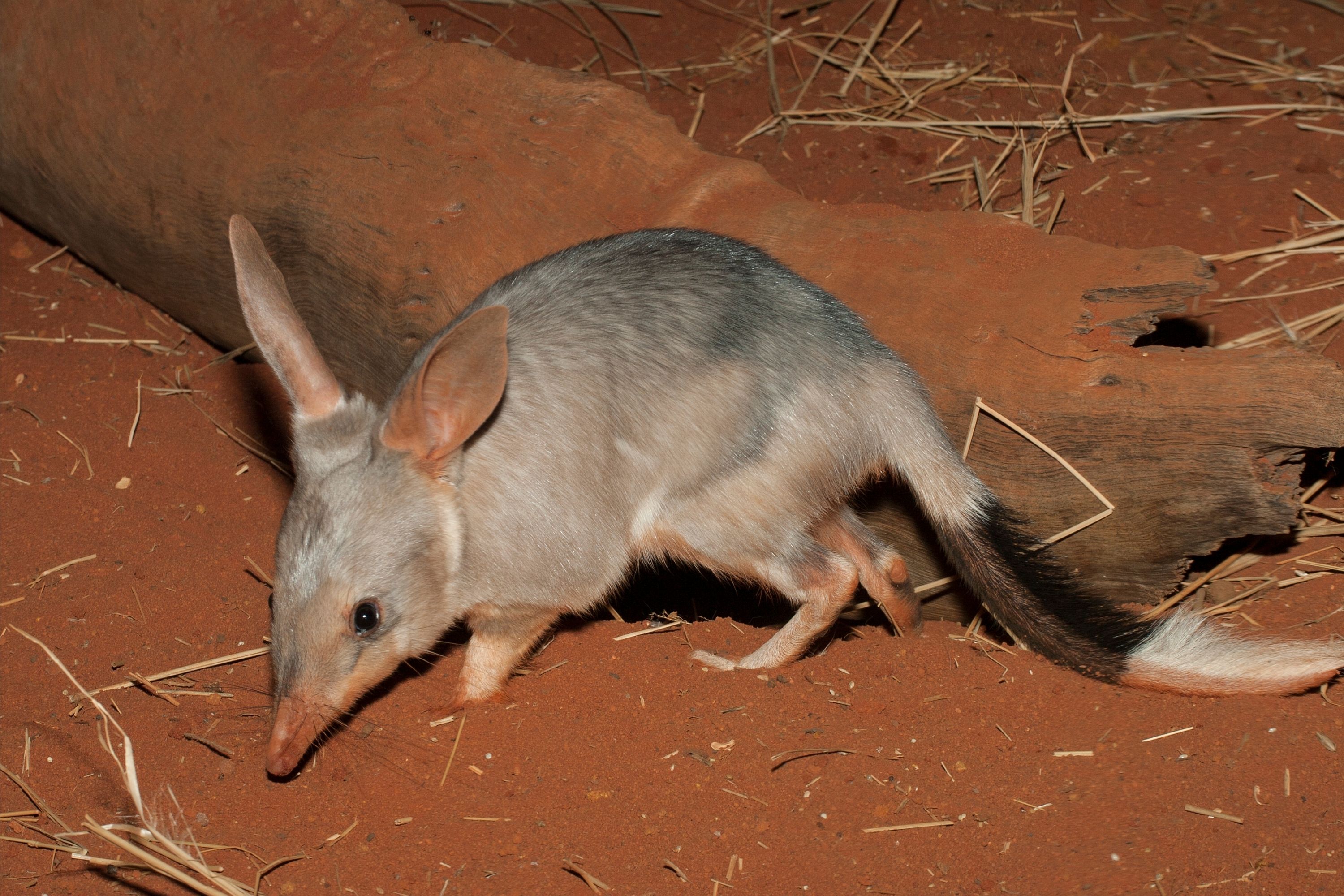Greater bilby
(Macrotis lagotis)

Description
The greater bilby (Macrotis lagotis), often referred to simply as the bilby since the lesser bilby (Macrotis leucura) became extinct in the 1950s, is an Australian species of nocturnal omnivorous animal in the order Peramelemorphia. Other vernacular names include dalgyte, pinkie, or rabbit-eared bandicoot. Greater bilbies live in arid parts of northwestern and central Australia. Their range and population is in decline. Greater bilbies have the characteristics of long bandicoot muzzle and very long ears. They are about 29–55 centimetres (11–22 in) in length. Compared to bandicoots, they have a longer tail, bigger ears, and softer, silky fur. The size of their ears allows them to have better hearing as well. At 1 to 2.4 kilograms (2.2 to 5.3 lb), the male is about the same size as a rabbit; although male animals in good condition have been known to grow up to 3.7 kilograms (8.2 lb) in captivity. The female is smaller, and weighs around 0.8 to 1.1 kilograms (1.8 to 2.4 lb). Bilbies have an excellent sense of smell and sharp hearing. Their fur is blue-grey with patches of tan and is very soft. The tail is black and white with a distinct crest. Unlike bandicoots, they are excellent burrowers and can build extensive tunnel systems with their strong forelimbs and well-developed claws. A bilby typically makes several burrows within its home range, up to about a dozen; and moves between them, using them for shelter both from predators and the heat of the day. The female bilby's pouch faces backward, which prevents her pouch from getting filled with dirt while she is digging. Once widespread in arid, semi-arid and relatively fertile areas covering 70 per cent of mainland Australia, by 1995 the bilby was restricted to arid regions and classed as a threatened species. Before the extreme contraction of its range to remote northern desert areas, the species was well known around Adelaide, especially in the city parklands, and it was also recorded as living around Perth. It makes its home in a burrow that spirals down, making it hard for its predators to get in. The bilby prefers arid habitats because of the spinifex grass and the acacia shrubs. The term bilby is a loan word from the Yuwaalaraay Aboriginal language of northern New South Wales, meaning long-nosed rat. It is also known as dalgyte in Western Australia by the Noongar people. The Wiradjuri of New South Wales also call it bilby. Other names include pinkie and rabbit-eared bandicoot.
Taxonomic tree:







